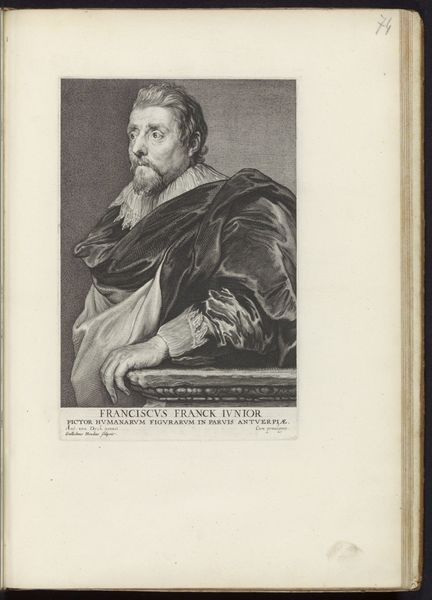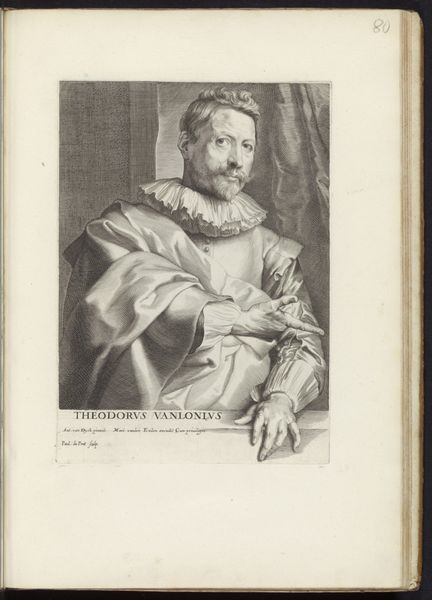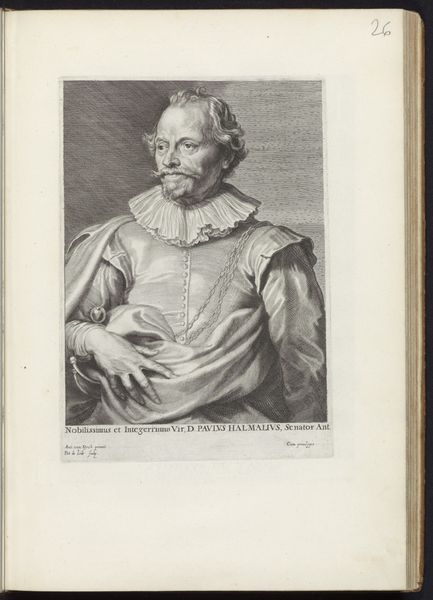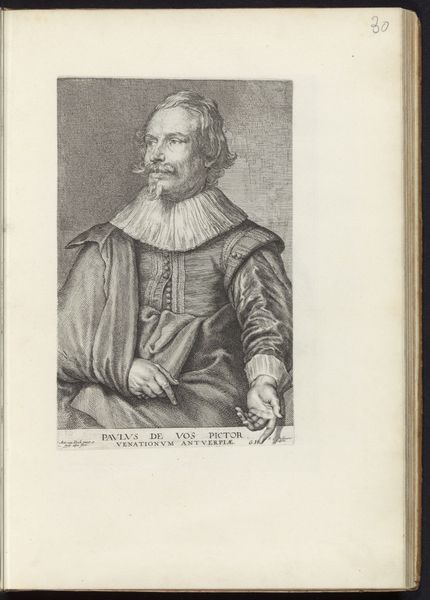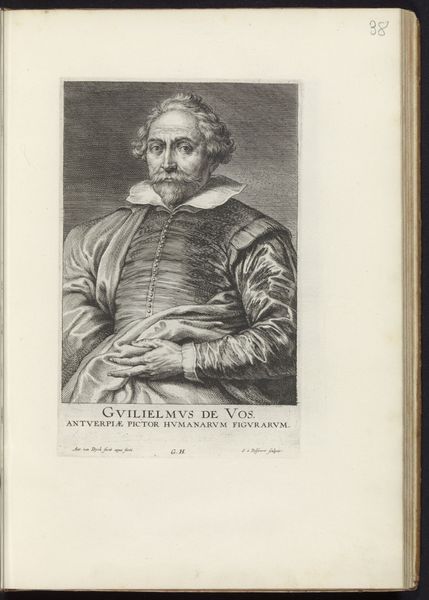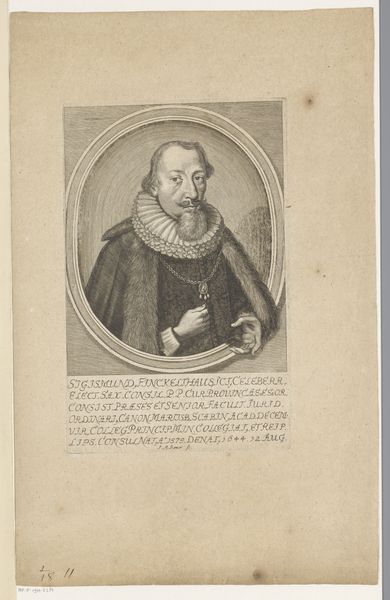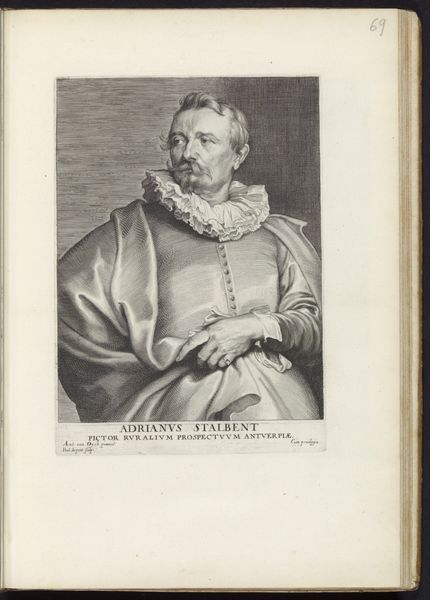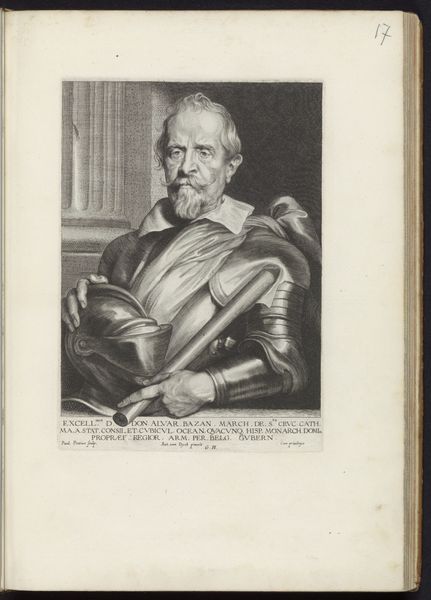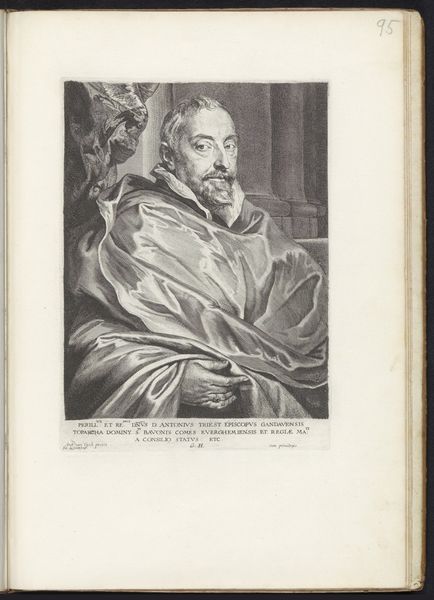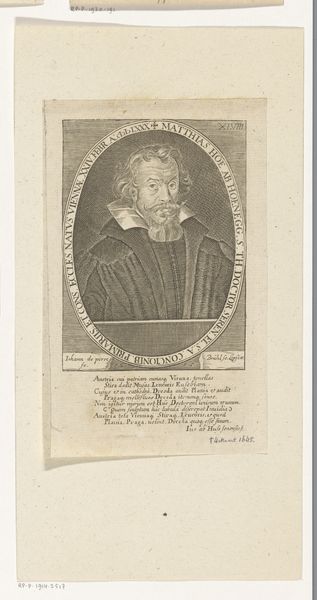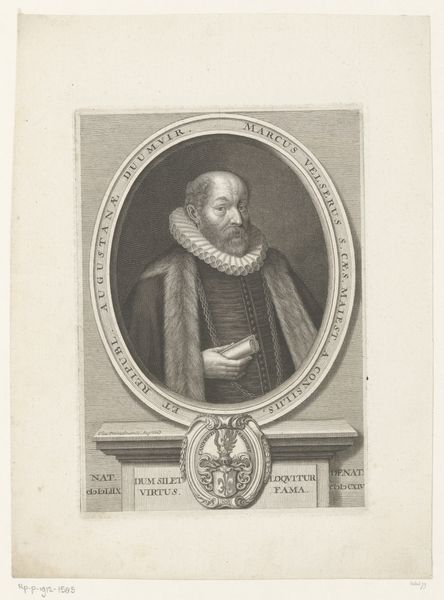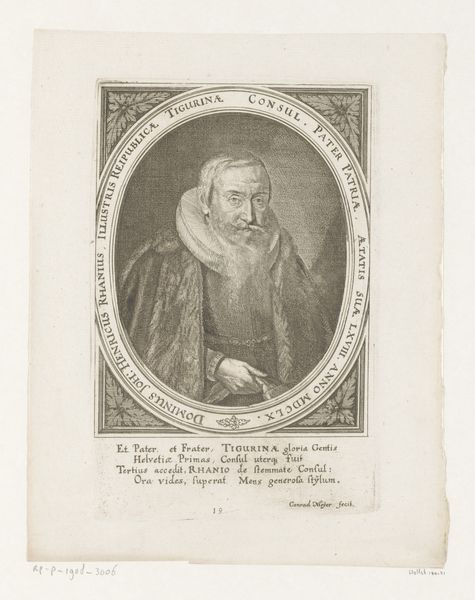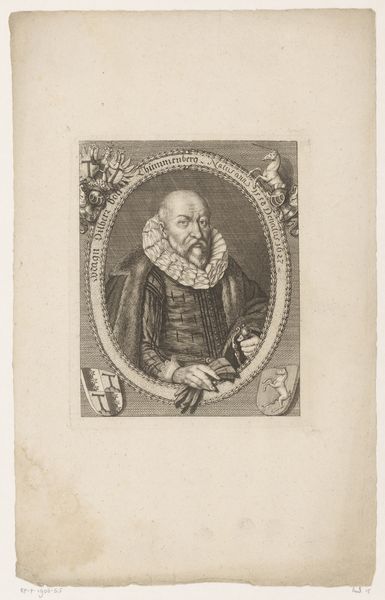
Portret van Jan van den Wouwer, raadsheer van aartshertog Albrecht van Oostenrijk Possibly 1630 - 1646
0:00
0:00
pauluspontius
Rijksmuseum
graphic-art, print, engraving
#
portrait
#
graphic-art
#
baroque
# print
#
old engraving style
#
engraving
Dimensions: height 237 mm, width 156 mm
Copyright: Rijks Museum: Open Domain
Curator: I'm struck by the weightiness of this portrait, literally. The density of the etching lines gives a sense of gravitas. Editor: Indeed. Here we have Paulus Pontius's print, "Portret van Jan van den Wouwer, raadsheer van aartshertog Albrecht van Oostenrijk," dating sometime between 1630 and 1646. A striking depiction of power and status in Baroque Antwerp. Curator: The subject’s fur-lined cloak definitely speaks to wealth and authority, but it is interesting to consider its symbolic layers. Fur has long held significance, denoting prosperity, warmth, and even animalistic power. Here, it elevates Jan van den Wouwer beyond the everyday. Editor: Absolutely. And what does it say about accessibility when one must literally cloak oneself in such privilege? Van den Wouwer was councilor to Archduke Albrecht, after all, deeply involved in the administration of the Habsburg Netherlands, which exerted considerable power. I read the opulence not just as a display but as an assertion, possibly in times of economic or social strain for wider society. Curator: His gesture seems significant. The hand holding what appears to be correspondence—a connection to his political role and worldly affairs—is presented openly to the viewer, ring shining conspicuously. Yet the unadorned background and neutral color space focus our gaze. Is that a beckoning invitation? Or a warning? Editor: I’d say that openness is carefully constructed. Consider how engravings circulated images in early modern Europe, reproducing ideals and solidifying power structures through portraiture. His stance, the slight air of condescension, and of course the ostentatious dress, all work together to position him—and by extension his lineage—as naturally entitled. Curator: Ultimately, despite the artist using black and white ink alone, the rendering is not simply illustrative but psychologically resonant, a dance between revelation and concealment. The image’s textures provide insights to its meanings. Editor: I see it similarly. We might see Pontius’ print as just a record of Jan van den Wouwer but, in truth, it provides an invitation to unpack how identities and socio-political systems interlock to form, maintain, and bolster privilege and its material manifestations.
Comments
No comments
Be the first to comment and join the conversation on the ultimate creative platform.
